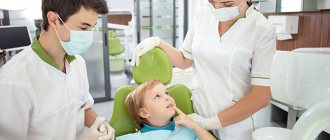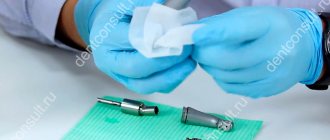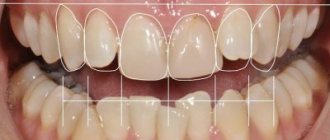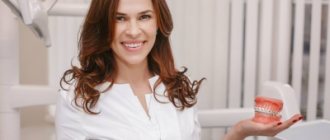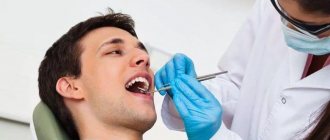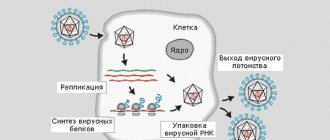Normative base
In the Russian Federation, general sanitary rules and standards for organizing their activities apply to all medical institutions. But depending on the specific profile of the medical institution, additional standards are applied to ensure the safety of patients. The requirements for a dental clinic are formulated in the federal law of November 21, 2011 No. 323-FZ, dedicated to the protection of public health and medical care, and in SanPin 2630-10 “Sanitary and epidemiological requirements for organizations engaged in medical activities.”
Changes for 2021
Currently, the main relevant document establishing sanitary and hygienic requirements for the work of dental organizations is SanPiN 2.1.3.2630-10 in the current edition. In connection with its adoption, a number of previously existing rules were canceled. For example, now a separate SanPiN 2.1.3.2524-09 “Sanitary and hygienic requirements for dental medical organizations” is no longer valid.
Since then, the text of the new rules has been repeatedly amended to ensure that its requirements correspond to the current situation in the field of medical care and public health. Their entry into force was due to the adoption of resolutions of the Chief State Sanitary Doctor dated March 4, 2021 No. 27 and June 10, 2016 No. 76. This year, the text of the current requirements for sanitary and epidemiological regulations has not been subject to changes. The introduction of new sanitary and hygienic requirements for dental organizations has also not been announced in the near future. It is not expected that the validity of already canceled documents will be renewed, therefore, for example, the previously abolished SanPiN 2.1.3.1375-03 with amendments for 2021 is unlikely to appear.
Current statuses of sanitary and hygienic rules and regulations
| SanPiN 2.4.3.1186-03, status for 2021 | Active |
| SanPiN 2.6.1.1192-03, status for 2021 | Active |
| SanPiN 2.4.1.2660-10, status for 2021 | Inactive |
| SanPiN 2.1.3.2630-10, status for 2021 | Active |
| SanPiN 2.1.3.2524-09, status for 2021 | Inactive |
| SanPiN 2.1.3.1375-03, status for 2021 | Inactive |
Results
A first aid kit should be available at any enterprise. From September 1, 2021, the mandatory contents of a first aid kit have changed. Old first aid kits can be used before the expiration date, but no later than August 31, 2025. The current composition of first aid kits will be relevant for 6 years, until August 31, 2027.
Sources:
- Order of the Ministry of Health and Social Development dated December 15, 2020 No. 1331n
- Labor Code of the Russian Federation
You can find more complete information on the topic in ConsultantPlus. Free trial access to the system for 2 days.
Sanitary and hygienic requirements for medical organizations
Section V of SanPiN for Dentistry for 2021 contains special sanitary and hygienic requirements that apply to dental medical organizations. This part of the document provides mandatory conditions that ensure compliance with sanitary standards in the work of a clinic or other type of medical organization. They are grouped into the following sections:
- general provisions and requirements for the placement of organizations, as well as the rooms they occupy;
- acceptable characteristics of the interior decoration of such medical facilities;
- requirements for medical technology, instruments and equipment;
- requirements for microclimate parameters, organization of heating and ventilation;
- standards for natural and artificial lighting;
- procedure for equipment and operation of X-ray rooms.
Sanitary and hygienic rules 2.1.3.2630-10
The main regulatory document for all medical organizations. It specifies the requirements for their design, the equipment used, the order of operation, etc. These standards are differentiated depending on the profile of the medical institution.
Sanitary and hygienic rules 2.4.3.1186-03
The document contains standards regarding the organization of the educational process in institutions of primary vocational education from the point of view of ensuring sanitary and epidemiological safety. It sets out the requirements for premises, furniture, educational equipment used and student accommodation.
Sanitary and hygienic rules 2.6.1.1192-03
These rules and regulations approve the procedure for equipment and operation of X-ray installations. They are widely used in medical institutions of various profiles, since X-ray equipment is used in various fields of medicine - from dentistry to surgery.
Requirements for the location of dental medical organizations
Current sanitary and hygienic requirements that determine the area of the dental office and other aspects of its placement include the following items:
- offices can be located in separate buildings or in buildings occupied by other medical organizations, including those of a different profile. Their placement in residential buildings, including the ground floor, is also allowed, provided there is a separate entrance and compliance with sanitary and epidemiological standards. The use of basements is permitted only for the purpose of placing economic facilities in them - compressor rooms, storage rooms, showers, etc.;
- occupied medical facilities must be equipped with all engineering systems that ensure the normal operation of the medical facility, including heating, cold and hot water supply, sewerage, etc.;
- Children are required to be received only in separate rooms; a separate waiting area for children is equipped whenever possible;
- the actual ceiling height according to SES standards must be at least 2.6 meters, the permitted area per main dental unit is at least 14 square meters, for an additional unit - 10 square meters;
- If the organization performs surgical interventions, they should be performed in a separate operating room. Also, as part of such an organization, a block is allocated for the postoperative stay of the patient;
- Urgent and planned interventions should be carried out in separate patient flows. It is allowed to carry out planned interventions in the same medical office where urgent patients are received, subject to a specially allocated time and after thorough cleaning in compliance with sanitary and hygienic standards.
Additional requirements for the location of a dental medical organization are given in Appendix No. 2 to SanPiN 2.1.3.2630-10. This section specifies that any such establishment must have a minimum set of facilities consisting of a lobby, a dentist's office, a staff room, a toilet and a storeroom.
| name of the property | Minimum area | additional information |
| The lobby, which houses the cloakroom, reception area and reception area | 10 sq.m | The minimum area is determined by the number of waiting patients: at least for one adult - 1.2 sq.m, for an adult with a child - 2 sq.m |
| Doctor's office | 14 sq.m | For each additional dental unit, another 10 sq.m will be required, for each additional chair without a dental unit - 7 sq.m. |
| Medical staff room with wardrobe | 6 sq.m | At least 1.5 sq.m. is allocated for each employee. Outerwear is placed in the wardrobe |
| Toilet | 3 sq.m | If the organization has no more than 3 dental chairs, the toilet for patients and staff is allowed to be combined |
| Pantry | 3 sq.m | Can be placed in a closet in the hallway or in the basement |
Requirements for interior decoration, lighting, microclimate, heating, ventilation
Current design standards for dentistry are formulated in part 4 of section V of Sanitary Rules 2.1.3.2630-10. They include the following requirements:
- the use of finishing materials that correspond to the purpose of the object;
- finishing the walls with materials that are resistant to wet cleaning and the use of disinfectants. The full height walls of operating rooms and surgical rooms for implantology are finished with ceramic tiles or a material with similar properties. The walls of the dental laboratory are painted or finished with smooth panels without seams;
- finishing of ceilings using water-based paint or smooth panels that are resistant to wet cleaning or the use of disinfectants. When using panels, it is important to ensure compliance with room height standards;
- finishing floors with smooth materials from the approved list;
- absence of gaps and ensuring smooth connections in corners, joints of walls, ceiling and floor, on the surface of walls;
- the use of neutral colors in the finishing of all surfaces to exclude the possibility of the selected color influencing the perception of the color of the patient’s teeth and gums, filling materials and other objects used during the dentist’s work;
- compliance with additional sanitary and hygienic requirements for the finishing of dental organizations in which mercury amalgam is used.
Parts 5 and 6 of Section V provide special requirements for the organization of operation of engineering systems, including lighting, heating and ventilation. The implementation of these requirements should ensure compliance with the permitted microclimate parameters in the premises of the dental organization.
equipment requirements
According to SanPiN for a dental office, equipment in such organizations must be placed in compliance with the following sanitary and hygienic standards:
- chairs are placed in one row along the wall on which the windows are located;
- if there are several chairs in the office, they are separated by opaque partitions no less than 1.5 meters high. In this case, the maximum number of dental units in the office is determined by its area;
- If there are no more than 3 chairs in the room, it is allowed to install sterilization equipment directly in the room. Otherwise, a separate sterilization room should be allocated for this. To sterilize the air in the room, bactericidal irradiators are installed. When installing open-type irradiators, their switches are placed in the corridor;
- In the office, it is necessary to install separate or two-section sinks suitable for hand washing. If the clinic has a separate sterilization room, one sink per office is sufficient. The sink is not located in the operating room; it is installed in the preoperative room. In this room, in the sterilization room and in the surgical room, elbow or touch mixers are installed. In dental laboratories and other areas where plaster is handled, a plaster trap is installed in the sink drain.
What are the dangers of acute toothache?
If a toothache occurs, of any intensity, you should immediately consult a dentist, without delaying the visit until the morning, until tomorrow. At the beginning of their development, dental diseases do NOT cause pain. Pain is a signal that there is not just “something wrong” with the tooth, it means that there is no longer time to wait.
ATTENTION!
Don't try to get rid of pain by taking painkillers! The pain may subside for a while, but without dental treatment, you risk complications, including loss of teeth, purulent processes, and sepsis. You can relieve acute pain in order to go to the dentist, but when taking medicine, call immediately and make an urgent appointment.
Sanitary and anti-epidemic requirements for the operation of clinics and offices
The work of dental medical institutions is characterized by specific risks. They are taken into account by SanPiN 2 1 3 2630-10, as amended for 2021, which regulates sanitary, hygienic and anti-epidemic requirements for the work of such institutions. The current hygiene standards of the dental office concern:
- rules for the sanitary maintenance of premises used;
- preparation and availability of emergency first aid kits;
- disinfection of used equipment;
- hygiene of medical personnel;
- other aspects of the work of dental clinics.
Requirements for sanitary and hygienic maintenance of premises
When organizing the maintenance of premises, the management of a dental medical organization is obliged to monitor compliance with the standards given in Part 8.2 of Section V of the SanPiN for dentistry for 2021:
- Carrying out wet cleaning at least twice a day - after the end of each work shift. When cleaning by spraying or wiping, detergents and disinfectants are used that correspond to the nature of possible bacterial infections in the room;
- washing windows from the inside at least once a month, from the outside - at least once every 3 months;
- disinfection of objects in the therapy area after each patient. Disinfection is carried out with the most powerful antimicrobial substances available, which are approved for use in the presence of patients;
- in operating rooms, surgical and sterilization rooms, general sanitary and hygienic cleaning is carried out once a week, using effective antimicrobial substances. In other premises of the organization such cleaning is carried out once a month.
Additional requirements for cleaning are given in sections I and II of the regulatory document of interest to us.
Requirements for first aid kits
The rules for providing emergency care in a dental clinic are formulated in separate regulatory documents: orders of the Ministry of Health dated December 7, 2011 No. 1496n and dated November 13, 2012 No. 910n. They regulate the provision of such assistance to adults and children, respectively. In accordance with these orders, a dental organization must have several types of first aid kits available, which are used depending on the nature of the patient’s emergency condition:
- dental emergency kit for general complications;
- first aid kit for recovery from anaphylactic shock;
- first aid kit for urgent preventive care at risk of contracting HIV infection or hepatitis;
- several types of first aid kits to provide assistance in the event of specific syndromes.
Disinfection and sterilization of medical equipment and medical devices
The current SanPiN for dentistry covers this issue in Part 3 of Section V. It contains the following standards:
- All products are sterilized and disinfected after a single use;
- The preferred method of sanitary and hygienic disinfection treatment should be complete immersion in a disinfectant solution. If this is not possible or the instrument has not been in direct contact with the patient’s body, disinfection by wiping is allowed;
- disinfection is carried out using antimicrobial substances. The choice of a specific substance is made based on the nature of microorganisms in the room with a focus on the most stable of them; after completion of treatment, the solution is thoroughly washed off;
- sterilization is carried out by physical or chemical methods. The choice of a specific method is based on the characteristics of the product;
- sterilized equipment must be used only if its shelf life has not expired;
- information about the sterilization of medical devices is recorded in a separate log.
This section provides information about the features of sanitary and hygienic processing and disinfection of various types of equipment and tools.
Hand hygiene
The procedure for sanitary and hygienic treatment of the hands of medical staff in dental organizations is carried out in accordance with the general requirements that apply to all categories of medical workers. They are formulated in part 12 of section I of SanPiN 2.1.2.2631-10 as amended for 20210 for dental nurses and other medical personnel. Mandatory conditions for all workers, according to the occupational safety instructions, are the absence of nail polish and jewelry on the hands, short-cut nails, and the use of care products to prevent contact dermatitis. Sanitary and hygienic treatment of hands is carried out in compliance with the following conditions:
- before contact with the patient;
- after any contact with the patient, including touching intact skin;
- after contact with equipment used to treat or diagnose a patient.
Sanitary and hygienic treatment is carried out by washing hands with soap or applying an antiseptic. After washing, hands are dried with cloth or paper towels, and after treatment with an antiseptic, dried. In all cases where contact with blood or other body fluids or other secretions of the patient is possible, the use of gloves is recommended.
How should you keep your first aid kit?
It is important that the contents of the first aid kit are constantly replenished with the necessary supplies and medications. Expiring medications should be replaced regularly.
For this, it is best to use a box, box or container that can accommodate all the medications and supplies. You can also purchase a ready-made first aid kit in a special container at the pharmacy. The drugs and supplies in the finished kit are packaged in the order and arranged in such a way that they are convenient to get in emergency situations.
It is very convenient to store medicines in several containers in which tablets, ampoules, vials, syringes and dressings are distributed.
What to do BEFORE visiting the dentist?
If acute pain occurs:
- Immediately rinse your mouth with clean water or mouthwash, preferably with an antibacterial effect. You can use a solution of table salt with iodine - 1 teaspoon of salt per 1 glass of water, add 3-5 drops of iodine.
- Brush your teeth, remove any remaining food from the tooth cavity.
- Take the painkiller you use for headaches and go to the dentist.
- You cannot warm a sore tooth or pick it with hard objects, incl. and a toothpick, use folk remedies for toothache, rinse the tooth with alcohol.
When do you need emergency dental care?
- For acute pain as a result of exacerbation of caries, pulpitis and their complications, pain under a dental crown or bridge.
- For injuries to teeth and jaw.
- When a tooth is fractured, chips or cracks form in the tooth enamel;
- For pain and bleeding after tooth extraction or surgery.
- For pain that began after dental treatment.
- When swelling and swelling appear on the gums and cheeks, pus is discharged near the tooth or from the gums.
- Breakage of orthodontic or orthopedic structures that caused injury in the oral cavity or there is such a threat.
If, in addition to the above, the patient:
- the temperature rose, a fever began;
- general weakness appeared;
- headache and/or ears, neck;
- swelling of the cheek is rapidly increasing;
- toothache does not stop after taking painkillers;
- bleeding has started in the mouth that cannot be stopped,
then you need to get an appointment with a dentist within 2-3 hours.
